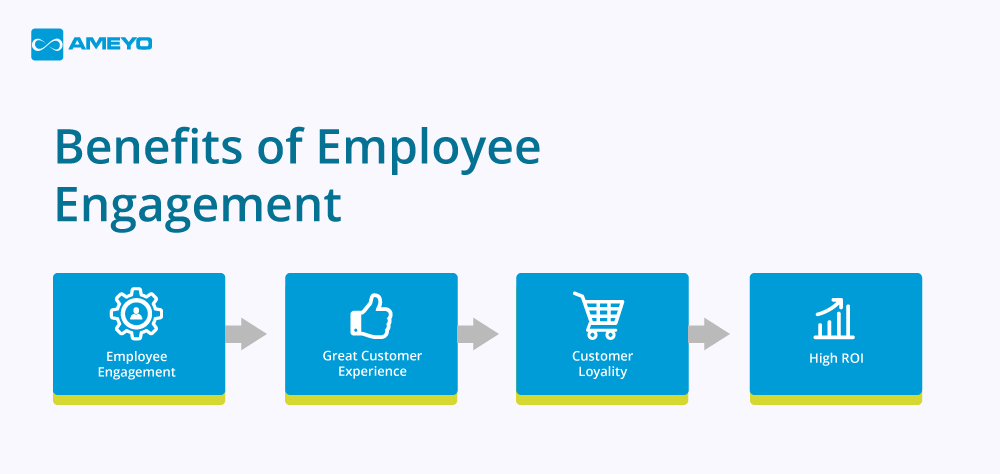As per a Mckinsey report, “70% of buying experiences are based on how the customer feels they are being treated.” This means that customer experience matters more than ever before. CX consulting firm Walker also forecasts that by 2020 customer experience will take over price and product as the key brand differentiator. This is forcing enterprises to take CX more seriously. But despite all the talk, the ground reality suggests otherwise. A recent Forrester study claims that “the average customer experience (CX) is getting worse, not better”. The primary reason for this gap is that enterprises fail to engage their employees “more intimately with the CX process”.
The idea is to drive your organization towards CX maturity by making it a disruptive force and overhauling the culture of the organization. This implies that the onus of customer experience is not only the shoulders of front end executives, customer service agents or the marketers. It is in fact the responsibility of every entity of the organization.
Quick-fixes and an formidable ambition is only a half-baked approach to map customer experience journey. To come across as an organization that actually cares about CX, there need to be a long term plan and a sustained effort to achieve customer experience competencies.
Recommendation for developing CX Competency
1. Strong CX Leadership
Although top leaders and decision makers of organizations are convinced about the benefits a good CX strategy brings to the table, they often lack the vision or training to achieve it. For every organization, the meaning and scope of CX is different. However, when tied down to ROI, the true value of CX comes to light. The clear road to develop strong CX leadership can be summarized as under-
- Know Thy Customer – Unless the top leaders of the organization are aware of the real voice of customers, working on a CX strategy is a vain exercise. For this, organizations need to carry out customer satisfaction survey (CSS), voice of customer program etc. to understand the pain points of customer interaction.
- Laying The Strategy – Once the pain points are identified, it’s time to lay down the strategy. For this, it is important to define the process, spot the stakeholders and define accountability.
- Executing The Plan– When it comes to execution, CX leaders need to establish a right balance between technology, innovation and employee engagement. Focusing on omnichannel customer experience innovation is incremental in offering employees the requisite insight that is useful for customer interactions.
2. Engaging the Employees
Research reveals that “companies that outpace their competitors in CX have 50% more engaged employees than those with CX that lags their peers”. The correlation between employee engagement and CX can be understood from the following imagery –
Higher ROI would also mean that the company has greater resources at their disposal to reward their employees and spend on training and customer experience technology. Employees that are engaged and nurtured also –
- Recommend the organization’s product or service to peers and others
- Go beyond the KPI’s to offer unmatched customer experience to the customers
Hearing the voice of employees is also a integral part of employee engagement. For this the organizations need to carry out the following activities –
- Organize periodic training or seminars to explain the employees the overall goal of the organization
- Conduct feedback session to learn about the bottlenecks in the operation as well as the technological challenges
- Translate the feedback into measurable actions. For example, if the employees have expressed the need for specialized training, the management of the organization must act upon it.
3. Delivering What Is Promised
How an organization treats its customers depends entirely upon the delivery of the promise. For instance, a customer purchases a pair of trouser, but discovers that a wrong size is delivered to her. The brand advertises product exchange cycle of 48 hours. Now, it is upon the customer service agents, the back-end team and the operations team to ensure that the customer is delivered the right size of the trousers within 48 hours.
For different team to work in tandem, a CRM integrated omni-channel platform that offers 360 view of the customers is absolutely necessary. The platform integrates communication from different touch points that includes text, chat, social media and call into a single view. Your employees will have a clear view of customer interaction and it will be easier to deliver the promise of CX.
4. Customer Engagement
Customer engagement does not end with purchase or subscription. In fact, it only marks the beginning of a relationship. Driving customer engagement with content like posting a blog, tutorial videos and FAQ’s is one way of doing it. Secondly, conducting a customer satisfaction survey to get feedback on existing product or process is also essential. This is undoubtedly the best way to identify CX laggard to constantly ensure that the customers are happy and satisfied.
The Bottom Line
The math is simple. How the customer is treated or served will eventually have a bearing on the ROI. Remember that times are changing and customers are willing to spend extra if they are promised exceptional customer experience and good delivery. A top to bottom CX maturity approach is what organizations need.



